Search the Community
Showing results for tags 'Confections'.
-
What are the best, darkest chocolates you've found in wholesale quantities? Aside from 100%, that is ... I'm thinking in the 75-90% range, available in quantities of 5-20 kg. It's definitely niche, but between the chocolate nerds and the low-carb-ers there's a market. Right now, 72% Felchlin Arriba is the darkest I use, in a bar with candied orange. I have not tried their Elvesia 74% or Sao Palme 75% but it looks like I can get them from AUI. A Felchlin 88% exists, but would be a special order arriving in a few months (their next container shipment?). Valrhona makes the Abinao 85% but that would be another special order. I'm pretty sure I tried it at one point and liked it. Does anyone keep it in stock? How is KaKao Berlin? They have a Brandenberg 75% but I'm not familiar with the brand. Any others? Or I could make my own and have the super dark be my one bean-to bar flavor ... thanks!
-
Does anyone have any tricks for making small balls of caramel (suitable for panning with sugar and chocolate)? So far I've tried making a batch of caramels, cutting them into little squares after they cool, and rolling them by hand into balls, but I very quickly run into the problem of the heat from my hands warming the caramels enough to release some of the fat from the butter in the caramel, making my hands too greasy for rolling. I could cool the caramels first to minimize this, but then they'd be too hard and won't change shape. I solved a similar problem when hand-rolling chocolate truffles by coating them in cocoa powder first - can I do something similar by tossing the caramel squares in powdered sugar first, or will that cause the caramels to crystallize?
-
Does anyone know of a source for a vegan confectioner's glaze suitable for sugar/chocolate panning (for sealing the candies from the Evils of the Outside World)? I have a couple of friends who are vegan or vegetarian, and I'd like to avoid being a total jerk if I can help it ("Look at these tasty treats I made THAT YOU CAN'T EAT!! MWAHAHA!!"). I need small quantities, as this is just for occasional home use.
-
Here's a fun little recipe I put together - it's a bit casual and unrefined, so I won't be at all offended if any experts jump in with improvements, but it's pretty easy to make, and makes a really tasty treat Toffee covered Marshmallows: 1 lb. bag large marshmallows (large homemade marshmallows should also work - feel free to give it a try) 1 1/2 cups sugar 1/4 cup light corn syrup 1/2 stick butter (or 1/8 lb., for non-US people who wonder what the heck a stick of butter is) A splash of water (yay for exact measurements! ) Also needed: 4 or 5 skewers (preferably metal), and a reasonably heavy coffee mug 1. Remove the marshmallows from the bag, separate them, and put them in a plastic bag or other suitable container in the freezer. It's OK if they are touching in the bag, but make sure they're not squished together. 2. After a few hours, add the rest of the ingredients to a saucepan (use just enough water to wet the sugar so it doesn't burn as easily) and cook on medium heat, stirring occasionally. 3. Cook the mixture until it just starts to turn brown - if you have a candy thermometer, this will be around 290F/143.333C. If you don't have a candy thermometer, just occasionally put a drop of the mixture on a white plate to check the color (then put "candy thermometer" on your shopping list, because candy thermometers are awesome) 4. Once it starts to just barely (but definitely) start to turn brown, take the pan off the heat, turn the stove burner down to very low heat, and put the pan back on (you want just enough heat to keep the mixture from cooling too much, but not so much heat that it continues cooking) - this is the toffee that you will dip the marshmallows into 5. Take the bag of marshmallows out of the freezer, stick a marshmallow on the end of a skewer, and dip it into the toffee. You must dip it quickly, so that the marshmallow doesn't melt, and also try to avoid dipping it in far enough that the toffee gets on the skewer (toffee on the skewer makes it really hard to remove the marshmallow cleanly) 6. Find someplace to stick the skewer while the toffee cools (this only takes a minute or so, but the toffee will stick to anything it touches until then, and it will probably drip until it cools). My recommendation is to put the aforementioned coffee mug on a plate (to catch drips), and place the end of the skewer in the coffee mug (see photo below) to hold it. 7. Once you've dipped the fourth or fifth marshmallow, the toffee on the first one you've dipped should be hard, and you can use a fork to ease it off the skewer so you can dip another marshmallow 8. Continue dipping marshmallows until you run out of marshmallows or toffee, or get tired of trying to keep them from sticking to each other in the coffee mug. Notes: -The heat from the toffee mixture slightly cooks the marshmallow, so you'll end up with a slight campfire-marshmallow flavor once you get through the thin candy shell - it's really quite tasty! -The toffee should drip off in long thin drips like in the photo (these easily snap off once the toffee cools. If you are instead getting thick oozing drips that make it look like the marshmallow is trying out for the part of "elephant" in the school play, you are dipping the marshmallows in the toffee for too long and they're melting - dip quicker -keep the marshmallows at least one inch apart in the coffee mug - if they make the slightest contact with each other, they'll stick permanently (and they make this really cool marshmallow-toffee bridge when you try to pull them apart). This will happen at least once in the process - just consider them samples for quality-control purposes -For those who are afraid of boiled sugar recipes, try this one out - just take your time and be very careful not to drip any toffee on yourself, and you should do fine. Feel free to message me if you have any concerns - I'm happy to help people get into candymaking -The toffee shell is quite happy to suck up any humidity in the air, so once they're made, they need to be eaten within a few hours or they start getting sticky on the outside - this is either a good point or a bad point Enjoy!
-
I'm a small-scale hobbyist candymaker (making things for myself and friends, not for sale), and I'm interested in learning more about sugar panning (mostly soft sugar panning, but also interested in hard panning). I recently made myself a panning machine, and understand the very basics of the process, but I'm finding it difficult to find thorough information on the process that is useful for home candymaking - most of the information I have found so far has been of the sort "here is how to use this product that you can only buy in 100-lb quantities", or "this $200 industry manual has a section on panning techniques that may or may not be useful, but you can't tell until after you buy it". Is there a good book/website/other source that thoroughly explains all parts of the panning process with enough detail to figure out how to do things with the materials at hand, and more importantly how to know at each step if things are going right? I have access to the book "Confectionary Science and Technology", which has been a HUGE help, but there's still quite a bit that it doesn't talk about. I also have a couple of specific questions, and would appreciate any info: 1. How do I add color? Adding gel food color to the syrup only provides slight coloration, and I have food color powder but am not sure if I should add it to the syrup, to the sugar, or just it to replace the sugar. 2. I have some carnauba wax to use for polishing, but I can't find any info on how to use it - do I just pour a small quantity of melted wax to the centers in the pan? Do I need to mix it with anything? Huge thanks in advance for any information you can provide.
-
I have made caramel for several years but over the past few months it has not set up the same. Now, as it cools in the container it appears that the corn syrup is separating at the bottom. I have not altered my recipe and have not been able to figure out why this is happening. Any suggestions>
-
I used my homemade toffee in a cookie recipe hoping that the toffee will add a crunch to the cookie... it didn't turn out well as the toffee melted and didn't keep its hardened crunch form. How can I prevent my toffee from melting in my cookie recipe?
-
- Troubleshooting
- Cake
-
(and 2 more)
Tagged with:
-
I've been working with the Boiron purée recipe tables (chocolate and PdF, ice cream) - some good successes. However the document is very terse and I wondered whether anyone who is experienced with these formulae might clarify what the expected result is: - "Fruit ganaches" and "Fruit and caramel ganaches". I think these are supposed to produce a ganache for cutting and enrobing, although when I tried it came out far too soft to be dipped??? - "Ganaches to be combined with fruit pastes" - I think these are to be layered above PdF and enrobed - is that right? - "Chocolate molded sweets" - Are these intended to be served as is, ie moulded without a layer of couverture going into the mould first? However the instructions talk about pouring into a frame. - "Fruity delight" - looks like a fairly light dessert to go into a parfait glass. Has anyone done these and how do they turn out? How do they compare to the sabayon-based ones in the Boiron ice cream book? I'm going to start working through some of the ice creams next week and it will be interesting to see how these turn out. Thanks for any advice.
-
Hello and Happy Holidays! I own an ice cream company and am looking for some information about equipment to use for scaling large batches of caramel. Right now, we cook sugar over electric heat in an approx. 6 qt. stainless steel pot. Once the caramel is at the correct color and temp (more on that below), we add our dairy to the hot mixture. Obviously, this is not a viable option for producing large batches. I'm familiar with confectionary equipment from Savage, but don't have the budget for an automated piece. Does anyone have experience with using just one of their copper or stainless steel kettles over a regular sized burner on electric heat? We've tried to use a single larger flat bottom pot sitting in the middle of all 4 burners on the stove to make a large batch of caramel, but it doesn't heat evenly. I'm wondering if the rounded bottom of the kettle helps the entire pot cook evenly -- would we be able to set the kettle right on the burner; or, have to use it in a double boiler setting? Additionally, any recommendations for thermometers that work well with caramel would be welcomed. We've used digital probes and candy thermometers, but on numerous occasions, the color and smell of the caramel that we associate with "doneness" is a dramatically different temperature for each batch. I came across a similar post on this topic from 2016, but aside from a recommendation for a large piece of equipment from Savage, there wasn't any other feedback. Hoping to get some good input that will bridge the gap between extremely small batches and mass production.
-
We have a local Italian bakery my mom loves, but they are very expensive and hard for her to get to. She also really likes cookbooks (she reads them even if she never cooks from them ) so I was thinking for her birthday I could get her a cookbook that has similar cookies and cakes, and offer to make a few things for her on request also. I'll obviously look myself, but eGullet is always well informed about the quality of cookbooks so I wanted to know if anyone has any recommendations. The thing about the Italian bakery is that the stuff they make seems to me to be not as sweet as classic American recipes, and often have more complex flavors and also are usually on the light end for whatever the item is. (Like even something that's intended to be dense doesn't have a very heavy sensation in the mouth.)
-
Hi: I'm making some homemade peanut butter cups, but shaping them like bon bons instead. I don't have bon bon molds, so instead I'm dipping the peanut butter centers into tempered chocolate. As the chocolate coating sets, it contracts and my soft peanut butter center squirts out a little. Is there a way to prevent this, or do I need to do a second dipping? I've tried with both frozen and room temp centers (although peanut butter with a little vanilla, salt, and powdered sugar doesn't seem to freeze at all).
-
It's that time again - I'm the group leader for a group of newly minted Ecole Chocolat grads taking a masters course. This one is in Wieze, Belgium. You may recall my last trip as group leader for Ecole when I took a group to Valrhona in France. I got my packing done on Sunday - was all prepared, car was to pick me up at 6 pm to drive me to the airport. Got a little suspicious when the child was late getting off the bus from school - the driver said that the highway wasn't moving well. At about 5:15 I got a call from the limo service to say that the car that was coming to get me had moved 2 car lengths in the last 30 minutes. Apparently a car roll over on the westbound lanes of highway had ejected two people into the eastbound lanes and the entire highway was closed in both directions. So I set out in my own vehicle - which of course had no gas, and needed oil... at least the toll highway got me past the problem. Airport wants $175/week to park - so a quick text to @Alleguede and he came to fetch my car from the airport to park in his driveway until I return. So here I sit in the lounge awaiting my departure. I'm doing the Jet Lag program that I have done several times before that has worked well for me. Overcoming Jet Lag, by Charles F. Ehret and Lynne Waller Scanlon. This involves food and caffeine modification. So for the past 4 days I've been drinking Rooibos Provence throughout the day and between 3 and 4:30 slugging down as much real tea as my bladder can handle! The dietary part consists of alternating days of 'feasting' and 'fasting' with high protein breakfasts and lunches and high carb dinners. I had planned to get the driver to stop at the Tim Horton's at the top of my street to pick up the black coffee that is to be taken at around 6 pm the day of travel - unfortunately as I was driving myself that didn't happen - so when I hit the lounge I drank down two cups of strong black caffeinated coffee - better late than never. I'm not much of a coffee drinker - and particularly not black. Should be good for some palpitations when I start the next part of the program which is to sleep as soon as I get on the plane! This is a 'fasting day', 800 calories suggested - I left my carb meal until I reached the lounge. ] One of the two cups of coffee. These are the "Gentlemen Retire to the Library' chocolates that I posted before that I am taking along - port wine PDF and tobacco ganache. I used Sosa tobacco flavouring this time instead of a cigar so I don't have to concern myself with nicotine poisoning.
-
I'm watching The Sweet Makers on BBC - four British pastry chefs & confectioners recreate Tudor, Georgian, and Victorian sweets with petiod ingredients and equipment. A little British Baking Show, a little Downton Abbey. Check it it out for a slice of pastry history. BBC viewer only available to the U.K., but on this side of the pond where there's a will, there's a way.
-
- 3
-

-
- Confections
- Dessert
-
(and 1 more)
Tagged with:
-
Hello! I was wondering if anyone on here has tried using an induction cooktop with confection making (caramels, fondant, marshmallows ect...). My stove has literally three settings, and the low setting still burns sugar and there is no such thing as maintaining any sort of "simmer". I was looking into getting a cooktop and buying some copper sugar pots and mauviel makes this thing that goes inbetween. I would love to hear any input into this idea or your experiences! ~Sarah
- 2 replies
-
- Chocolate
- Confections
-
(and 3 more)
Tagged with:
-
Left vs right, mostly non-smudged vs mostly smudged. Sigh. Why does this happen? Was my chocolate too warm? I painted the corners with a chocolatey brush to prevent air bubbles, but that was only in the corners and I certainly didn't linger with the paintbrush. Ideas?
-
Greetings all! Quick question ...Has anyone used confectionery coating in ganache, and been successful? I'd normally not do this, but I have a very dear friend who is allergic to chocolate. Her son is graduating from high school, and she hired me to do chocolates. We'd all like for her to enjoy something from the selections at the reception. The only pieces I can do for her without any chocolate derivatives is of the white chocolate variety. So, white confectionery coating is the only alternative I can find to sub in. Now, with the actual chocolates, I did a butter ganache with white chocolate, mango puree and coconut. (Tastes amazing, btw.) If I do the same method with the softened butter, glucose; then mix in melted confectionery coating, will it harden up when I add the puree, or stay soft? I tend to think it would be okay, but I absolute hate the idea of wasting that puree. So, thought it best to ask here and see if this a disaster in the making- or a decent alternative... Thank you for any help and advice you're able to lend. As always, your expertise is very much appreciated! Andrea
-
Some chocolate makers have incredibly intricate chocolate molds that boggle my mind. How do they clean them? Or do they not clean/polish them? Or have an army of interns? Or just do it perfectly every time and polishing molds is for suckers anyway? They are beautiful, but seem so very impractical. What am I missing? The Soma is not bad, mostly thin lines, but the Askinosie ...
-
Hi All, I am having a caramel problem. I have access to some delicious water buffalo milk (28% fat). I attempted to use it as a replacement for heavy cream(36% fat) in my usual caramel recipe. Unfortunately, when I added the hot milk to the hot sugar, the mixture split into an ugly, grainy mess. I did manage to improve it by blending it with an immersion blender, but the final texture was still grainy. The flavour was great though! The method I used was to make a dry caramel with white can sugar, then I added a small amount of glucose and the buffalo milk that I had heated to a simmer. I cooked this to 252 and added butter before pouring into a pan to cool. Does anyone understand the science better who could recommend a different method or adjustment to the ingredients that might make it have a smooth texture as caramel should? My supplier for buffalo milk does not have a separator, so using buffalo cream at this time is not an option. I thought about adding butter to the buffalo milk when heating it to bring the fat content up to that of the regular cream, and/or using an emulsifier or something like lechithin or xantham gum. Any thoughts? It seems I am constantly coming to you for help. Thanks, as always.
-
Host's note: this topic was split from Pâte de Fruits (Fruit Paste/Fruit Jellies) (Part 2) I took a look. Rather manipulative site: you have no idea what your selection will cost until you have finished choosing chocolates. And the descriptions are a masterpiece of marketing: dulce de leche is "succulent homemade milk jam"--a rather grand description of cooked sweetened condensed milk. Really! But you are so right, they look amazing.
-
Hey there wise E-gullet-ers! I have another question to put out there. I am interested in making a rose jelly - one that I can layer with a chocolate ganache similar to a pâte de fruit. I don't really know how to go about this. Do you infuse water with dried rose petals and make a syrup? What's the best way to gellify it? I'm very curious. Has anyone made jellies with any other botanicals? Is anyone willing to share their recipe as a guideline? Many thanks! Christy
-
Good morning! Long story short: I am doing a spin off the coconut/chocolate/almond candy (almond joy), and trying to create a specific shape out of the almond. My hands are cramped after a couple dozen failed attempts whittling roasted almonds, so now I'd like to try a different approach, and instead, create some kind of sub-candy or cookie with roasted almonds that I can put into a mold or use a mini cookie cutter. I'm fairly new to sweets, my knowledge in this area is pretty slim. Some ideas so far, I don't like any, but it might help turn some gears: 1. dusting almond over a stencil, but that's not enough almond nor crunchy enough 2. almond brittle, but that's too hard and sweet, I'd like it more of a soft crunch, and bringing the almond flavor forward 3. meringue with almonds (sort of macaron-ish), however, weather has been humid and raining here, and I'm ending up with a gooey mess instead of that soft crunch In addition to having almond-forward taste and soft crunch texture, it'd be fun to explore something modernish - I have a accumulated a few tools and ingredients not customarily found in homes. There are dietary considerations I will have to account for, however, no need to worry about that now, I am just looking for ideas and a place to take it from there Thank you for your time in reading!
- 16 replies
-
- Chocolate
- Confections
-
(and 1 more)
Tagged with:
-
Hello, hoping someone can help me with some workflow questions. I've recently taken over the pastry role in a small tasting menu restaurant and we'd like to produce molded chocolate truffles for either mignardise or take-aways. We have 5 poly trays of molds that hold 40/tray and we'd like to produce roughly that many per week (200). Time and space is tight so I'd like to do this in one go, once per week. The problem I'm having is I don't know the proper workflow for creating this many candies at once. We do not have a tempering machine so it would be stovetop tempering. Is it possible to do that in one go with one big bowl of chocolate? In the past I've made truffles, but always discarded the chocolate after filling the molds. Is it a bad idea to put chocolate from the molds back into the large batch of tempered chocolate? (i.e. fill the molds with chocolate, let the shell set (1-2 mins) then when tipping the chocolate out, can that be tipped back into the large batch?) Also, any tips for large batch tempering of chocolate? We don't have a marble slab so the seeded method is really the only one. The real question is how can I keep a large batch of chocolate tempered for the time it takes to produce 200 molded candies? We have minimal equipment for this kind of operation and I'd be tempering over a double boiler then using ambient heat from a frenchtop to maintain temperature. Is this too much to do without a tempering machine? I'm worried about maintaining the temperature of the tempered chocolate during the time it takes to fill 200 molds with filling. I know I can retemper if I lose it but I really need to work fast and efficiently to get this done in the timeframe that I have (~1hr). If anyone has some insight into a workflow it would be much appreciated. Thanks, Jesse
- 1 reply
-
- Confections
- Dessert
-
(and 1 more)
Tagged with:
-
[Host's note: to ease the load on our servers this topic has been split. The discussion continues from here.] Chocolate nails... And a "How it's made!" video...
-
Looking for your opinions and experiences... I am planning to put some wire shelving in my chocolate & confections kitchen. The kitchen has a concrete floor. This shelving will hold ingredients, colored cocoa butters, and packaging. Wondering if I should get casters for this shelving... what are your thoughts on this oh so important question? ;-)
- 20 replies
-
- Chocolate
- Confections
-
(and 1 more)
Tagged with:
-
I'd like to do a smores flavor and a few other uses of marshmallows in some molded chocolates. Can anyone give me some guidance on preparing marshmallows so that I can pipie them into the molds? I see a problem similar to the PDFs....by the time they are cool enough to put in the chocolate shells, they are too firm to pipe. Anyone have any tips, pointers, suggestions, etc.?


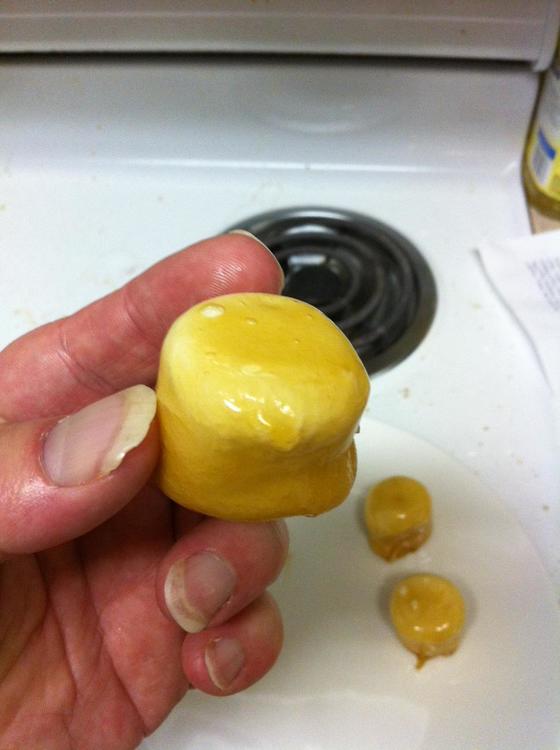
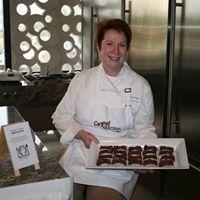


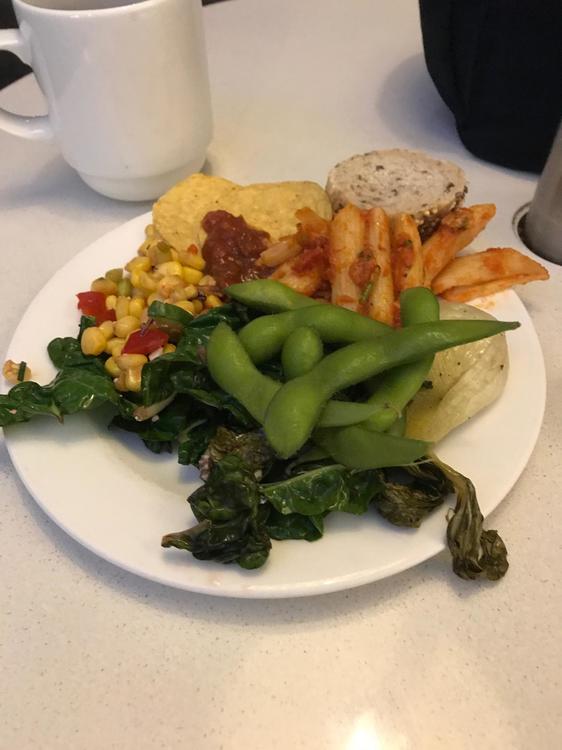

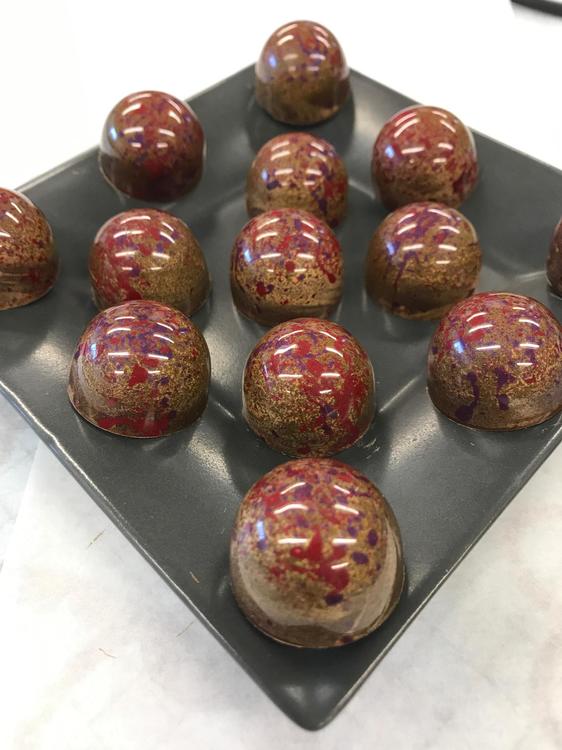
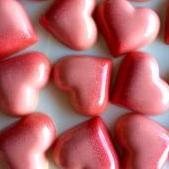
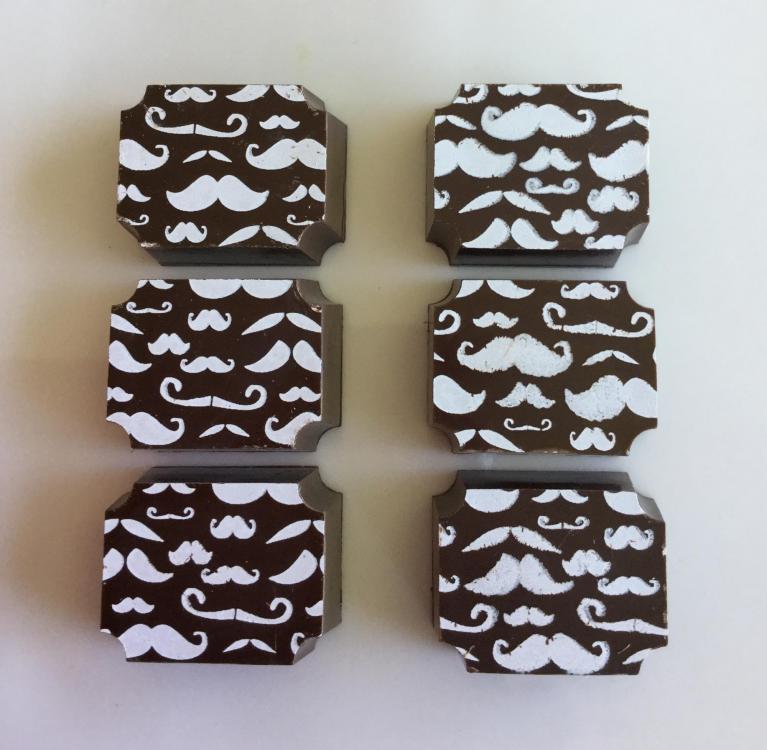



_WM_400.jpg.55445f232fb5e4bf63d62844a75b09de.jpg)
